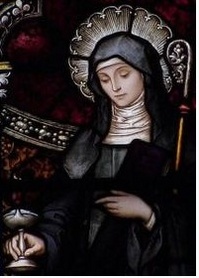What happens to women in ministry when the ground on which they are standing suddenly shifts? That is, what happens to women who are “ordained” when the word “ordain” suddenly changes? That is the impact of the first chp in Gary Macy’s The Hidden History of Women’s Ordination: Female Clergy in the Medieval West.
Ordination is an ecclesial act so it shouldn’t be too hard to determine if women were ordained in the ancient church. So, Macy dips into the six-fold breakdown of Jean Morin, a famous liturgist who compiled what he could in 1655! Here are his six points:
1. The ritual must be called ordination.
2. Celebrated at the altar by the bishop.
3. Hands must be laid on ordinand.
4. Stole place on the ordinand.
5. Ordinand receives communion as bread and wine.
6. The ordination be to priest, deacon, or subdeacon.
Macy’s task is to reveal that this set of criteria only fits the evidence after the 13th Century. It was from the 11th Century on that priest, deacon and subdeacon are raised to a new level, and along with that elevation came the connection — and this is the secret — of eucharist dispensing with priesthood and ordination.
Most importantly, the word “ordain” was connected to “bless” and to “consecrate” and to “veil” — and “ordain” was used as well for kings and doorkeepers. So, “ordain” was not the narrow word it was after the 13th Century.
 And women (like Brigid of Ireland) were “ordained” prior to this — and it referred to being called by a local church into a function. Macy trots out a number of liturgical rites for ordaining, blessing, consecrating women in lists where the same terms are used for men. It would therefore not be inappropriate to say that prior to the 11th-13th Centuries “ordain” meant a calling into a function (not an office or a power) and that after those dates it came to mean being granted power to consecrate the bread and wine at the eucharist.
And women (like Brigid of Ireland) were “ordained” prior to this — and it referred to being called by a local church into a function. Macy trots out a number of liturgical rites for ordaining, blessing, consecrating women in lists where the same terms are used for men. It would therefore not be inappropriate to say that prior to the 11th-13th Centuries “ordain” meant a calling into a function (not an office or a power) and that after those dates it came to mean being granted power to consecrate the bread and wine at the eucharist.
Hence, the “church that emerged from Lateran IV (1215) was, despite the intentions of its creators, something new — a more clerical, more hierarchical, more centralized church than that which preceded it” (47). The folks — men and women — prior to this “belonged to a different church and a different time” (47).
This has something to say to RCC today; but it also has implications for Protestants because the Reformers, who were trying to get behind the 11th-12th Centuries seem to have retained this newer understanding of ordain. (The Anabaptists, by the way, seem to have done better on this one.) For it came to mean for Protestants an ordination to sacrament and Word.
Our next post will look at chp 3 and the “roles” of ordained women, something I develop in The Blue Parakeet: Rethinking How You Read the Bible
.

